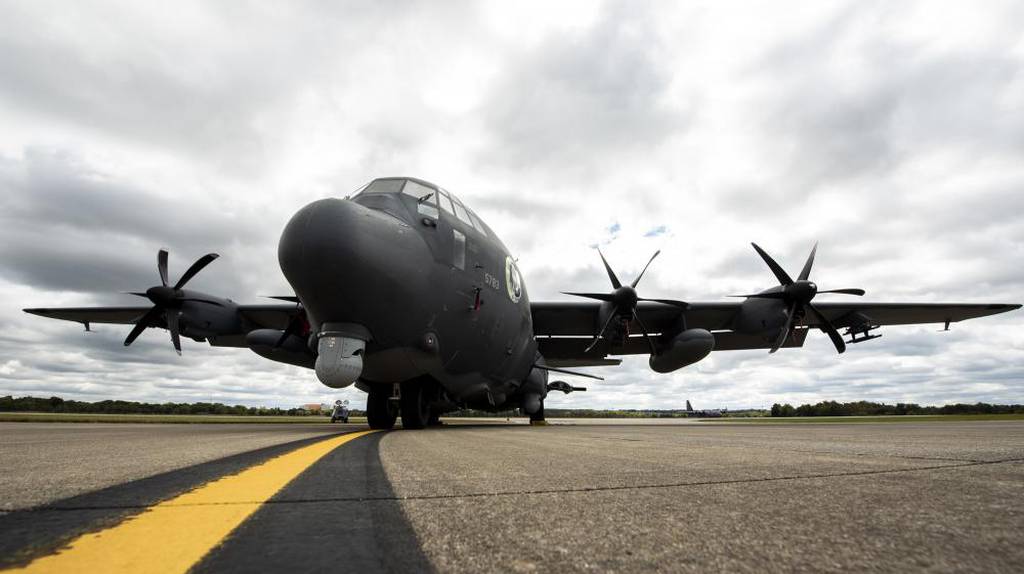The Pentagon has quietly cut procurement of its new AC-130J Ghostrider special operations gunships, downsizing the fleet to 30 from 37.
U.S. Special Operations Command had planned to buy nearly 40 Ghostriders to replace older gunships: the AC-130H Spectre, AC-130W Stinger II and AC-130U Spooky. Each of those 37 aircraft are now retired.
Rather than swap out the airframes one-for-one as expected, SOCOM wants to end the decade-long AC-130J acquisition seven short of the full program.
SOCOM tucked mentions of the change into its fiscal 2023 budget request, writing that it would maintain a total of 30 AC-130Js. Each airframe costs $165 million apiece, according to an Air Force fact sheet.
The military has purchased 31 of the gunships from Lockheed Martin for combat purposes, but will not replace one that was flown too hard during testing and is no longer airworthy. That plane now serves to train airmen on the ground.
“There is no buy planned in [fiscal] 2024,” SOCOM said.
The military opted to pursue a smaller AC-130J fleet as a way to “better position [Air Force Special Operations Command] for the future fight,” spokesperson Lt. Col. Becky Heyse said Thursday.
“The C-130Js were already purchased and it was decided to not modify them to become AC-130J (extensive mods required to add the gun and other capabilities),” Heyse said. “The remaining C-130Js are going to the 193rd [Special Operations Squadron as MC-130Js to recapitalize their fleet.”
The final AC-130J arrived at Cannon Air Force Base, New Mexico, on Nov. 2.
“The airplane and its predecessors have exceeded all our expectations and kept more Americans alive than any other airplane on the battlefield,” Air Force Special Operations Command boss Lt. Gen. Jim Slife said at the delivery ceremony.
The remaining 30 Ghostriders are stationed at Cannon and Hurlburt Field, Florida. The schoolhouse is slated to move from Hurlburt to Kirtland AFB, New Mexico, by October 2023.
AC-130 gunships have been a combat mainstay since the Vietnam War and are constantly deployed for conventional and special operations missions around the world.
Two pilots, one combat systems officer, one weapon system operator, one sensor operator and four special mission aviators comprise the Ghostrider’s crew.
The newest J-model is said to be the most heavily armed gunship in history, with the ability to tout 30mm and 105mm cannons, AGM-176A Griffin missiles, AGM-114 Hellfire missiles and GBU-39 Small Diameter Bombs. It has also acted as a testbed for an experimental high-energy laser weapon.
“The AC-130J provides ground forces an expeditionary, persistent direct-fire platform that is persistent, ideally suited for urban operations and delivers precision low-yield munitions against ground targets,” according to the Air Force.
Spurred in part by the U.S. withdrawal from Afghanistan last year, the military is now turning its attention to hardware and software that could give it the upper hand in competition against advanced militaries like China.
That’s led to decisions to divest and downsize aircraft that may be less useful in those scenarios, including the Air Force’s move to shrink its combat search-and-rescue helicopter fleet by about 25 airframes.
AFSOC is likewise exploring what the next chapter could look like for its elite airmen. Slife has indicated the command could venture farther into the space and cyber realms, and figure out how to adapt traditional missions like close air support for a more challenging fight.
“The future is going to be different than what we have experienced for the last 20 years,” Slife said. “One thing I’m certain of is, this airplane will be relevant to whatever the future operating environment brings.”
Rachel Cohen is the editor of Air Force Times. She joined the publication as its senior reporter in March 2021. Her work has appeared in the Washington Post, the Frederick News-Post (Md.), Air and Space Forces Magazine, Inside Defense, Inside Health Policy and elsewhere.








